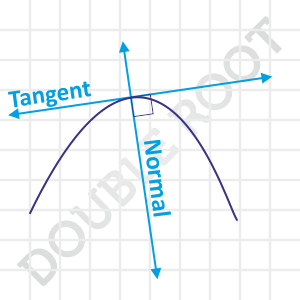Welcome to the next lesson in the Circle series. This lesson will talk about something known as a ‘normal’. This will be followed by with a few examples in the next one.
This won’t be as long as the tangents section, and is quite simple to understand. But things will get a bit complicated when we move towards other conic sections. We’ll worry about that later.
Let’s first define what a normal is.
Definition
The normal to a curve at a given point is the line perpendicular to the tangent at that point.
In other words, the line perpendicular to the tangent (to a curve), and passing through the point of contact, is known as the normal.
Here’s a figure to show you what I mean:

Simple enough?
Now we’re interested in equations – equations of normals to circles at given points, of given slopes, and passing through given points.
Talking about normals to a circle, there is a peculiar property – the normal will always pass through the center.
Why? Because, in a circle, the radius is always perpendicular to the tangent (at the point of contact). Hence it must coincide with the normal (as per the definition) and therefore the normal must pass through the center. Have a look…

This very property will help us finding equations to the normals in various cases.
I’ll begin with the equations in the next lesson. See you there.